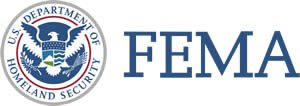RSS feed source: Federal Emergency Management Agency
SANTA FE, New Mexico – After New Mexicans apply for disaster assistance, FEMA may call to schedule an inspection of the damaged home or to ask for more information to process the application. These calls may come from unfamiliar area codes or phone numbers.
It is important to answer the call. A FEMA inspection may be required to determine whether a home is safe, functional and accessible. If an inspection cannot be scheduled, that may cause a delay in FEMA’s review of a homeowner’s or renter’s application.
There is no charge for an inspection. The inspector will have a FEMA photo ID and your application number. FEMA representatives never ask for money. If you receive a call from someone claiming to be a FEMA representative, but you aren’t sure, call the FEMA Helpline at 800-621-3362 to verify the caller’s identity.
Residents of Lincoln County who suffered losses after the severe storms, flooding and landslides that began June 23 can apply for FEMA assistance for losses not covered by insurance.
The deadline to apply for FEMA assistance is Sept. 22, 2025.
To Apply for FEMA assistanceThe fastest way to apply is at DisasterAssistance.govIn-person assistance is available at the State Disaster Resource Center located at Eastern New Mexico University – Ruidoso Annex, 709 Mechem Dr., Ruidoso, NM 88345. The location is open 9 a.m. to 7 p.m. daily.You can also use the
Click this link to continue reading the article on the source website.


